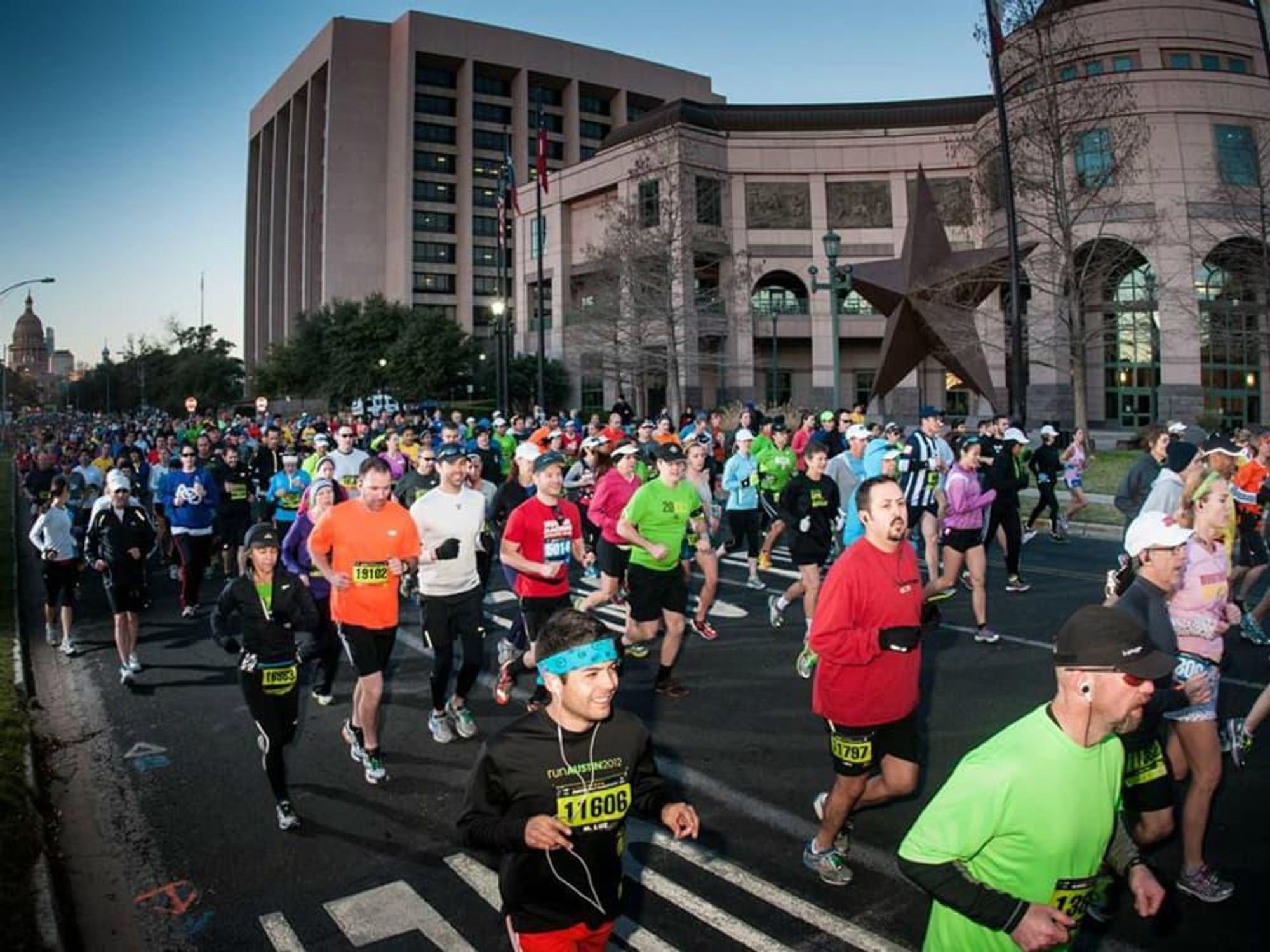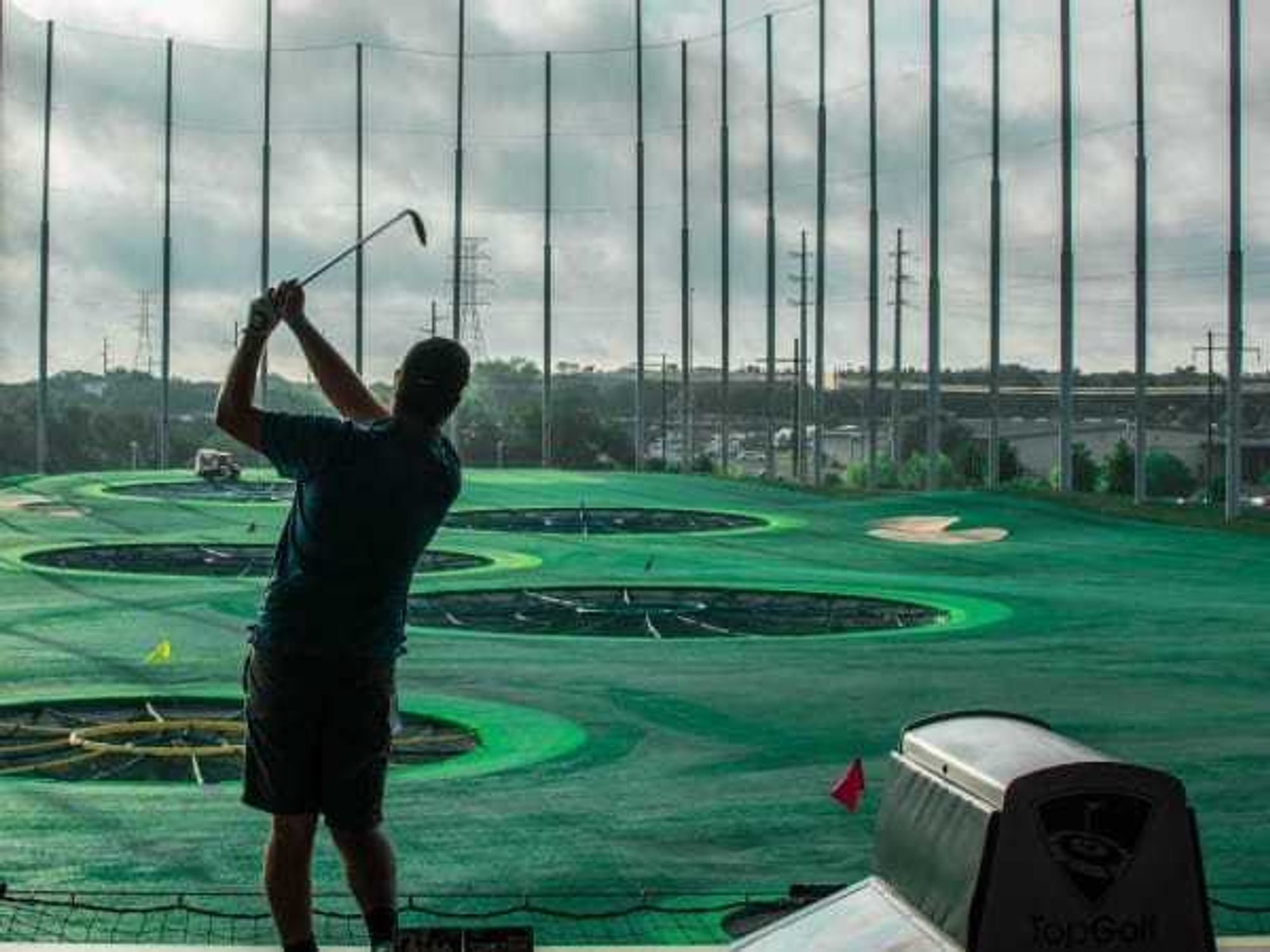Run the Marathon without Running
Running the Austin Marathon: A local runner on the ups, downs and that grueling SoCo hill

After months of preparing, it’s finally here. This Sunday, one of my dearest friends and I will join thousands of other runners for the challenging but glorious Austin Marathon, Half Marathon and Paramount 5K. Supported by our boyfriends, families and countless friends scattered throughout the course, and led by a friend who graciously offered to pace us, we will attempt to meet our 3:34:59 Boston Marathon qualifying finishing time.
The gun goes off at 7 am Sunday morning, just as the sun will crest over our pink Capitol dome and the start line at 16th Street and Congress Avenue. Half marathon and marathon runners will meander our way through downtown for a mile before heading south on Guadalupe toward Cesar Chavez to pick up Congress. There are a few schools of thought on how to approach the first few miles of this race before hitting the three miles of the slow, steady incline through SoCo.
Some run the entire race, including this surprisingly tricky incline, at the same pace from start to finish. While that has worked for me in the past on flatter courses, this is Austin, friends, and there’s nothing flat about the course. Rather than go all out from the start, which I will admit is easy to do given the adrenaline rush of the morning, a lot of runners take the first few miles easier in order to save energy for the steady incline. Up until this point, our plan is to stick with our 3:30:00 pace group and let them go at Congress, pulling back slightly to conserve energy.
After completing the first of a handful of tougher parts of the race, runners hop over to South First Street via Ben White Blvd., picking up a little speed and inhaling that fresh tortilla smell wafting from the authentic taquerias and Mexican joints lining the street.
By the time the race hits Lady Bird Lake, we’re nine miles in — and in it for the long haul. Half marathoners and marathoners spend the next two miles together before splitting at Enfield Rd. and Mopac; half marathoners head east toward the Capitol and marathoners head west toward the massive slopes on Exposition Blvd.
They say the marathon is two races. The first 20 miles you’ve meticulously planned, conserving energy when you can and picking up speed here and there to prepare for the real race — the last 6.2 miles.
Personally, until a few weeks ago, I was petrified of this part of the course. Maintaining a speedy pace up these substantial inclines through Tarrytown scared me like no other, but after doing a practice run one bitterly cold Saturday morning, those hills don’t last as long as you’d think. And if you relax and stick to a detailed race plan like we plan to, you’ve likely built in time to pull back on Exposition and not kill yourself.
Once we’ve dominated the Expo hills, marathoners start traversing north, stair-stepping our way through Allandale and Crestview before hitting what many say is the loneliest part of the course: Great Northern Parkway. This worthless street snakes along just east of Mopac — it’s flat, it’s more than a mile long, and it’s boring. But once this part is over, our race finally takes us east for two miles before heading south.
They say the marathon is two races. The first 20 miles you’ve meticulously planned, conserving energy when you can, and picking up speed here and there to prepare for the real race — the last 6.2 miles. At Morrow and Woodrow, we’re 19.5 to 20-ish miles in. At this point, our bodies are almost spent, maybe you've even hit the dreaded "wall," but hopefully, the strategy has worked. There’s enough gas in the tank to go all out for those last few miles.
On Sunday, the last 6.2 take us back south through the Crestview neighborhood, east through North Loop past some Austin favorites like Foreign and Domestic and Drink.Well. and finally down Duval before we hit the home stretch past DKR stadium and through the UT campus.
All that’s left after crossing MLK Blvd is a hill on San Jacinto that will feel like a tiny bump given that adrenaline has taken over completely and you can hear the finish line at 10th and Congress.
Finishing a marathon is a feeling unlike any other. No matter how fast or slow, how crappy you feel or how awesome, crossing that finish line is like flying. Knowing you’ve challenged yourself physically, mentally and emotionally for the last several months to achieve a goal that less than one percent of people complete is empowering and invigorating. And finishing the race in a city like Austin, where our running community is so supportive, is just icing on the cake.
To the 30,000 spectators out there, you’re appreciated more than you can ever know. You are what make us runners survive the marathon when we think the wheels have come off and we feel like dying. Thanks for the funny signs, the music, the words of encouragement, Gummy Bears, Twizzlers and other little treats that get us over the hump.
To the 20,000 runners out there preparing for Sunday, whether half marathon, full marathon, or 5K, this is your race. The hay is in the barn, so to speak. Nothing left to do but run.
Austin Marathon and Half Marathon by the numbers:
- The marathon is capped at 5,000 runners and half marathon at 12,000. Combined with the Paramount 5K, 20,000 runners are expected on Sunday morning.
- 80 percent of the runners are from Texas, and 30 percent of those call Austin home.
- Close to 30,000 spectators will cheer on runners along the course.
---
Visit www.youraustinmarathon.com for information on road closures, parking, and spectating opportunities.
